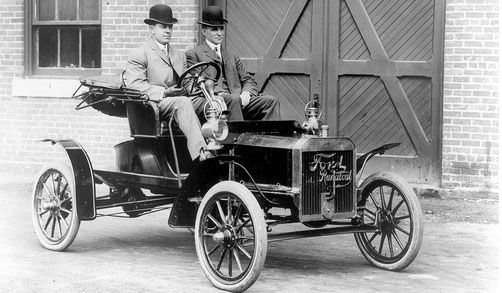Faster horses!

Henry Ford, founder of the Ford Motor Company, was famously disparaging of paying too much attention to the opinions of his
customers. His view was that he had a better idea of what they wanted than they did. When asked about canvassing their opinions he offered the view that if he’d done that when first setting up the motor industry, they’d have asked for faster horses.
The subject criteria for the next generation of KS4 courses were recently released. As indicated previously, the Science + Additional Science model is going, replaced by a dual award course. Separates are still there of course and the jury is still out on the role of enquiry skill assessment (though I suspect the debate over A level reform is being watched carefully).
So what do the criteria show? Well, they build straight on the KS3 Programme of Study. Exam specifications will be developed working onwards from that. Even if you’re not in a school that is required to deliver the National Curriculum, when your students start GCSEs the course will assume that this has been covered.
Maths is certainly being taken seriously. As well as the usual list of requirements, it’s made clear that the Maths is to be up to the same level as in a corresponding GCSE Maths level course. Furthermore the mathematical requirements are specified topic by topic. It’s clear, for example, that students studying ecosystems will need to develop mastery of certain mathematical techniques in so doing.
Probably the biggest factor, however, is the detail of the content and the linkage of stems to it. It usually falls to the Awarding Organisations to attach stems (such as ‘explain’ or ‘analyse’) to ideas. No longer. Now the DfE has done it. The resulting document reads more like a specification. Furthermore, the amount of content looks to me to be quite enough to fill a complete course. In the past, the Additional Science and separate science courses have had part of the content selected by the AOs. Like Henry Ford, the planning is done before the customer gets a look in.
Now, this may not be a bad thing. Certainly the courses will be comparable (how could they not be?) and the sharing of resources will be easier, which is good. It does rather rely on the document being right in the first place. What it also means is that a critical choice for schools choosing their next set of GCSE courses will probably find that the difference comes in the guidance being offered to schools in managing the transition. Although the subject criteria are set out in a logical way, it’s not a teaching sequence. Remember, there’s no unitised structure here so there’s a lot of freedom is deciding the batting order. The AOs may well be developing courses over the next year that are very similar in content and assessment but there may be a real choice in terms of the way they’re structured and presented.
Ed Walsh


